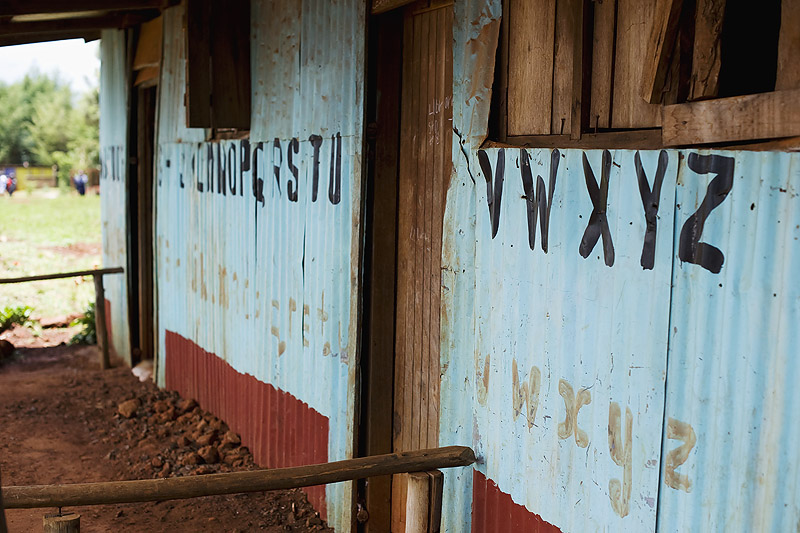We flew Vancouver-Calgary-Heathrow-Istanbul-Nairobi, and by then two days had passed and it was 3:25 a.m. in Kenya and the rainy season had begun, early for the time of year and early in the morning. We walked across the tarmac from our plane to the concrete lower-level immigrations, our first experience in Africa being getting wet, though it was African rain and not our plain west coast of Canada rain. That made all the difference. Middle of the night in Nairobi and we’d heard the stories, had been warned against being out at night, and so once we’d paid the $50 Visa to get into the country Daniel and I were escorted, by a guard swinging a club, away from all other humans into darker shadows and through what looked like a tear in the wall more than a door frame, and along the side of a shambled building and past the guards with AK-47s to Terminal 3 where we remained, on high alert, until our 7:10 a.m. flight to Eldoret. The terminal wasn’t officially open at that hour but they let us in. We left Victoria on Tuesday and arrived in Mosoriot, 15km from Eldoret, on Friday morning around 8:00 a.m. Daniel wanted to run first thing and I was good with it to shake off some of the travel, having not run for a few days and with the Saturday race a day away. Malleoli disappeared under swelling from the trip. Ankles no longer distinct and tapered down from the calves but lower legs plummed straight. Legs now stumpy and heavy, and shockingly white against the red dirt roads and the Kenyans who cheered and sometimes laughed as we stumbled down the road. Children shouted "How are you?" and if you answered "Fine" they shouted again "How are you?", more of a greeting and test of their voices and the English language, and wanting to hear our voices respond, than an actual question. Sometimes the children joined us, laughing and smiling and adorable. This was just a 30 minute jog.
It rained all Friday. The tarmac road that runs through Mosoriot to Eldoret is the only paved road. All offshoots and parallel roads are red dirt. From the tarmac the red dirt banks down into a gully and the rains clear the dust from the air and wash it down onto the red roads turning it to clay, which sludges into the gully. It's not a day for good shoes. The dirt roads and embankments don't absorb water so much as create a slick so that it becomes nearly impossible to run. On the rainy days Kenyans will travel to find paved roads for their workouts. Rob started thinking he would have to cancel Saturday's race.
But on Saturday we woke to sunny skies. The race was scheduled to start at 8:30 a.m. so Daniel and I walked over to the site just before then thinking we would use the first couple of kilometers of the race as our warm up. By 9:00 a.m. the race still hadn't begun. An official from the notoriously corrupt Kenyan Athletics gave a long pre-race speech to all the racers, telling us we're only cheating ourselves if we duck into a bush and rejoin the race when it passes again on a multiple loop course, or if we know a shortcut and take it. I haven't ever considered either of those during a race and it occurs to me it takes a certain type of mind to think it's even a possibility and so to warn against it. The athletes themselves just want to test their abilities against other racers. In my race, the half marathon, the only prize is a handshake and a bolstering of one's pride and from my experience nearly every runner respects their competitors in a comrade and hardship way.
Some of the runners blasted away at the start and I rolled out at 3:46 for the first 1km, thinking I'd start conservatively and build into it. Last year I ran 3:11 pace for half marathons, and at Mosoriot's altitude this should translate to 3:20 - 3:25 pace once adapted. By 30 minutes I'd worked my way down to 3:39 average pace, and only 10 seconds up the road was the top mzungo, a 2h17' marathoner from Germany. At that point things felt pretty good and I figured I would stalk the German and try to work him a bit over the second half. The race is called a half marathon but that gives the false impression it's on roads. These red dirt roads are more like cross-country. They're soft and cambered and rutted and rocky, and if they're wet they are slick, and the roads the race organizers chose for the race rarely ran straight or flat. Mostly they went up or down, left or right, and sometimes there were cows on them, skinny cows, not like North American cows. These ones were hungry and docile and you could see their ribs.
Then we hit a 2.2km long hill climbing 120 meters. I hadn't adapted to the altitude and I'd barely slept in three nights, and it all seemed to catch up rather quickly. Once the road flattened out and I could look ahead at the runners rather than down at my feet, I could barely see the German, and I was running with the eventual 4rth place female runner. My lungs weren't really taking in much air and my head was starting to spin the way it spins if you hold your breath too long, like two minutes or more, that kind of feeling, a feeling more black than white. We dropped down a treacherous hill and the 4rth place woman was sweet and pointed to the ground warning me of the bigger rocks, because by then I was following her and barely hanging on.
I'd passed a few Kenyan men during the race but during the out-and-back portion I couldn't see a single man behind me, and I was later told many of the Kenyans will stop and pretend to tie a shoe, or just drop out, if they aren't having a good race. They'll push until they break, if they ever do break, and then they would save themselves for the next race rather than continue pushing and there's a certain logic to that. What I did see were scores of men ahead of me, enough to field a few Red Rover teams, plus two other women (I'd moved up to third woman), and I think I'd have been lucky to be in the top 100 overall.
We entered the finishing field at 20km and the last 1km was zig-zagging up and down this field to make up the full half marathon distance. There were a few mounds of dirt on the field which I had trouble running up, sometimes just cresting them before my momentum stopped. If I was 3:39 average pace 30 minutes into the race, and at the finish I was 3:54 average, it meant I ran 4:04 pace for the last 13km of the race. It felt as hard as 3:20 pace back in Victoria.
I loved hurting like that, loved suffering the unique way hills and altitude and challenging conditions can make you suffer, when leg speed isn't a factor and lungs and heart are all that matter.
I'll write about the trip in these three stages: Mosoriot, then Iten, then the safari. Three very different chapters.
 Driver John's driver's license.
Driver John's driver's license.
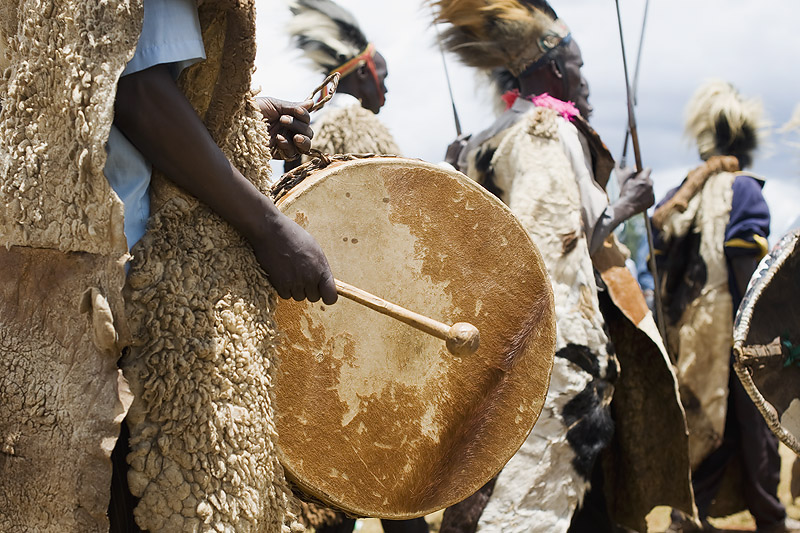 Warriors' dance.
Warriors' dance.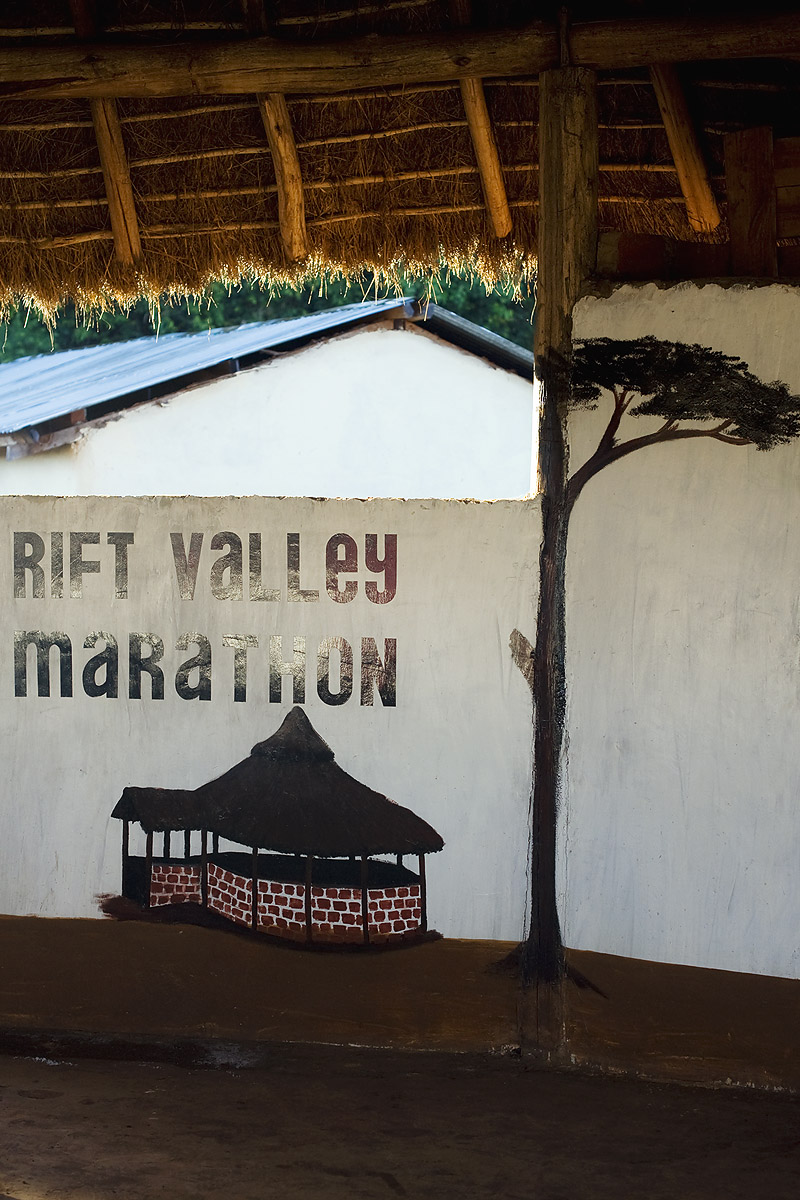 Rift Valley Marathon.
Rift Valley Marathon.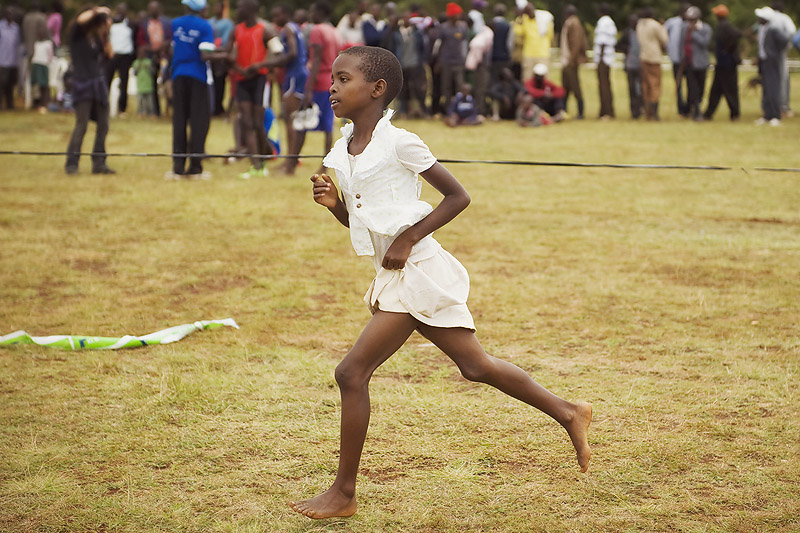 Runner in the kid's race.
Runner in the kid's race.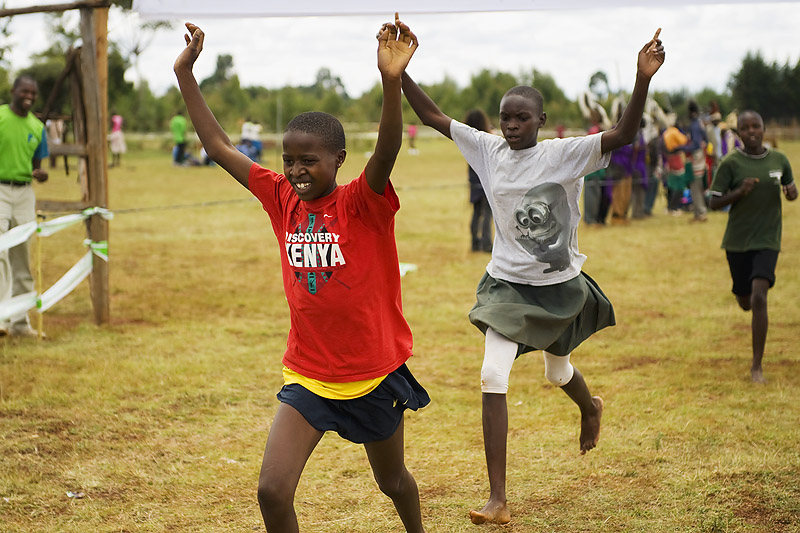 First and second celebrating their positions in the kid's race.
First and second celebrating their positions in the kid's race.
 Men's marathon winner.
Men's marathon winner. Daniel is congratulated by the chief of police.
Daniel is congratulated by the chief of police.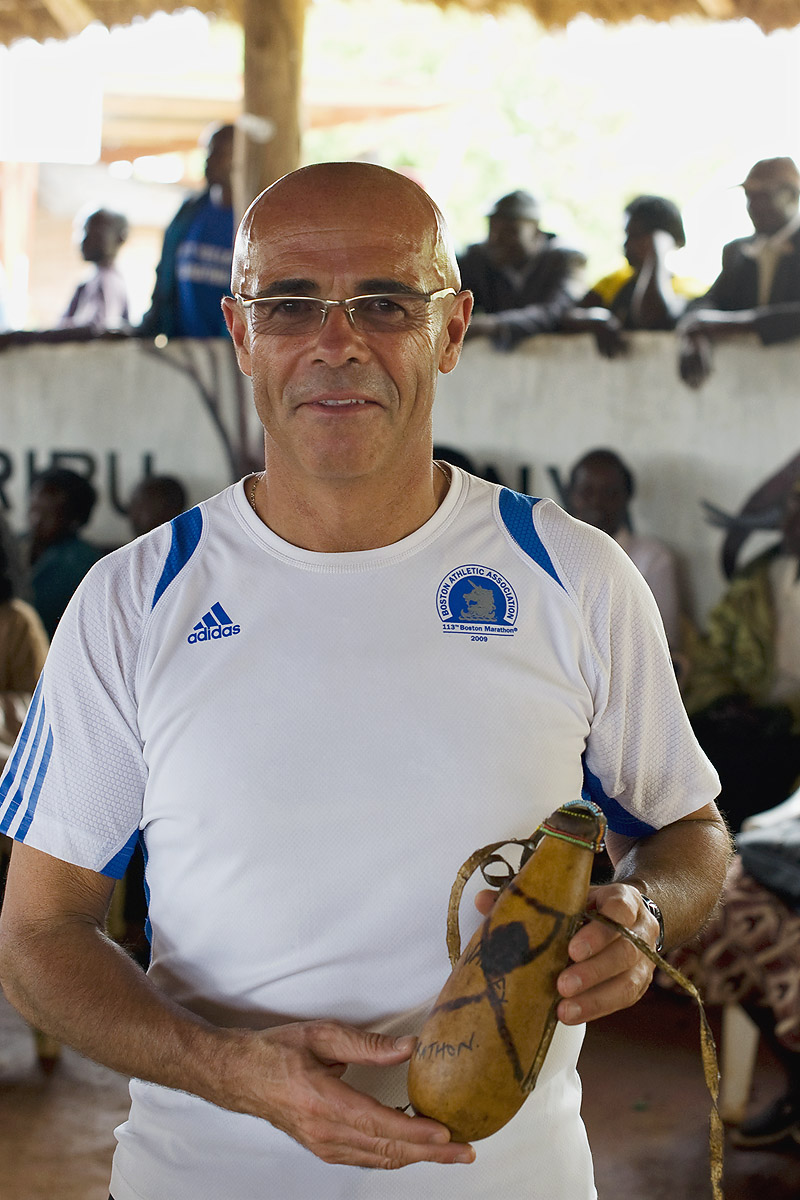 Daniel with his award.
Daniel with his award. Arsenal needs all the support they can get right now.
Arsenal needs all the support they can get right now.  Children in Mosoriot.
Children in Mosoriot.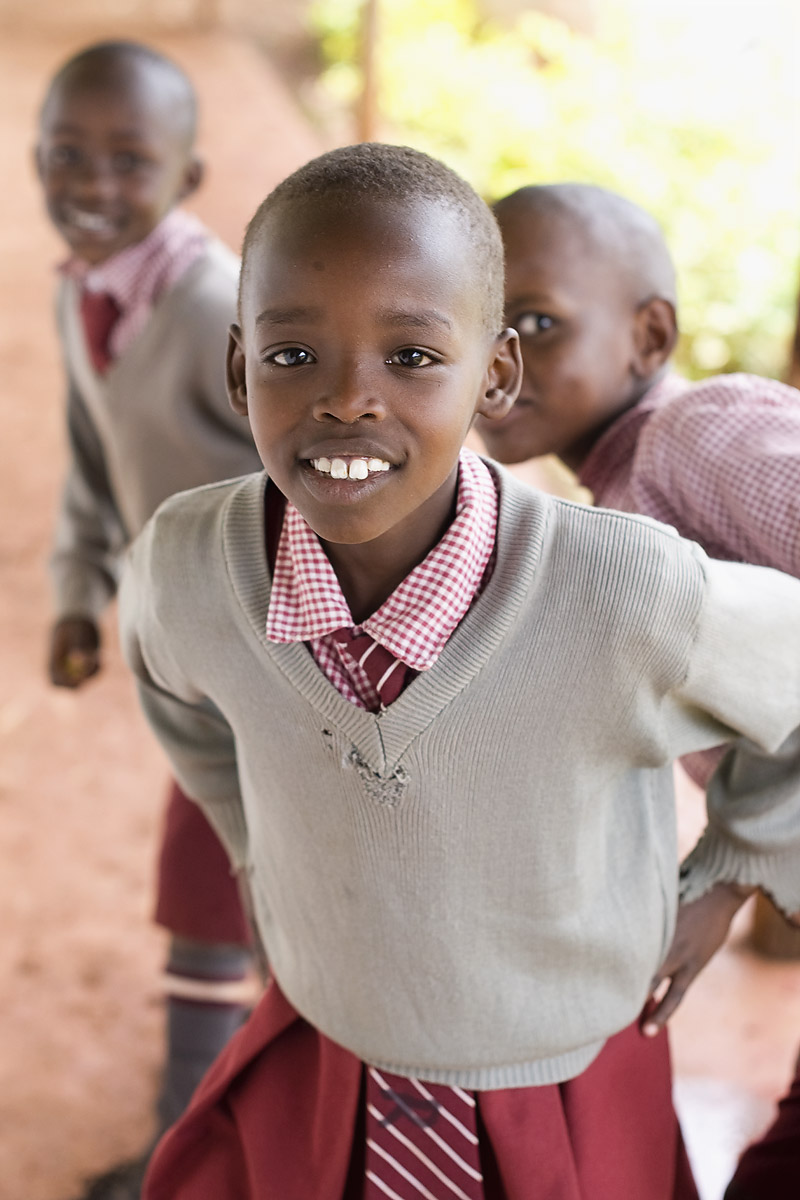 School children.
School children.


